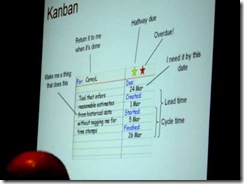This morning, SEI Partners and Sponsored Individuals received the letter, below, from Dr. Paul Nielsen, Director & CEO of SEI.
THIS IS A GOOD THING.
Watch the video for my explanation why it is.
******
To All Partners and Sponsored Individuals:
The following important announcement is sent on behalf of Dr. Paul Nielsen, Director and CEO.
Carnegie Mellon University (CMU), the Software Engineering Institute (SEI) and the U.S. Department of Defense (DoD) have mutually decided to move the CMMI (Capability Maturity Model Integration) and the PCMM (People Capability Maturity Model ) out of the SEI and into an independent business unit of CMU. We believe this new unit may also be a natural transition path for other SEI developed technologies, methods and practices as they mature.
The SEI is a Federally Funded Research & Development Center (FFRDC) established in 1984 to provide technical leadership and innovation through research and development to advance the practice of software engineering and technology in support of DoD needs. DoD acknowledges the significant contributions that CMMI has made to Defense programs and the software engineering community, in general. Recognizing the maturity of CMMI and PCMM, SEI and DoD have agreed that the maturity of these technologies make this an appropriate time for the SEI, as a science and technology based FFRDC, to concentrate on newer research.
Carnegie Mellon University is excited about establishing this new business unit to serve the global software engineering community even better–to make adoption, evolution and maintenance of the models more flexible for government and commercial organizations, to be more creative with our partners and other organizations in creating business relationships, and to face the market more proactively.
As we plan and implement this transition, one key objective is to cause as little disruption to our licensees and partners as possible; therefore, we expect the transition to be seamless, with continuity among key participants. You can expect:
- A renewed, single-minded commitment to the product
- A transition that underscores the central role of our licensees and partners
- Continuing investments to expand the scope and evolution of the models
We intend to transition these technologies and evolve the business model in conjunction with our partners and the Partner Advisory Board. Current details of the transition can be found at http://www.sei.cmu.edu/partners/CMMI-Transition-2012.
Additionally, we will be hosting interactive webcasts on 25 May at 9:00-10:00am EDT and 30 May at 5:00-6:00pm EDT. To register for the webcasts Friday, May 25: https://www1.gotomeeting.com/register/649898953 or Register Here and Wednesday, May 30: https://www1.gotomeeting.com/register/690424856 or Register Here. Look for more face to face information sessions at SEPG-EU.
Best regards,
Paul






